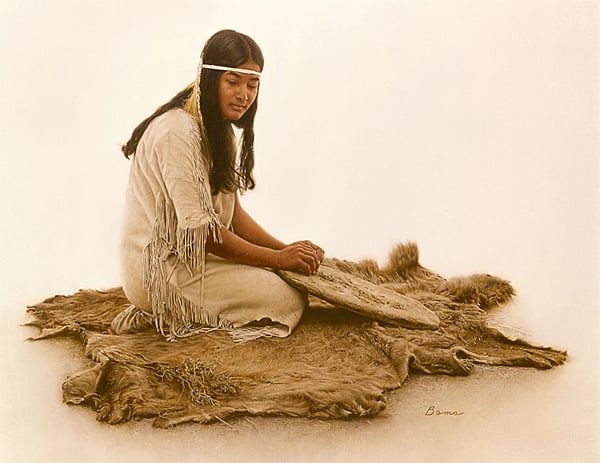Sage Grinder
The Whitney Gallery of Western Art at the Buffalo Bill Historical Society in Cody, Wyoming provides one of the most concise descriptions of James Bama’s artwork it has been our pleasure to read:
The artist's natural talent, academic training, and practical professional experience as an illustrator equipped him with the tools to succeed as an easel painter. Influenced by photography, abstract expressionism, pop art, and illustration, Bama fused these media and styles into an ultra-detailed brand of realism based on complex compositions. Unlike many artists working in the American West today, he steadfastly refused to paint the Old West but instead dedicated his career to painting real people of the modern West. His detailed portraits capture the ethnic and cultural complexity of the American West through people who live simultaneously in two worlds.
Sage Grinder is one of Bama’s most recognized paintings and a perfect example of his vision for capturing the West. “My model for this painting,” begins Bama, “was a young Navajo girl, a student at Brigham Young University. One summer, on the outskirts of Cody, she and a number of other Indians re-created an early native village to demonstrate the manner in which the Indians lived before the arrival of Columbus. Charging admission, they taught such crafts as sage-grinding, cooking and the making of weapons. The entire encampment was all very well done. It was a rare opportunity for me to pose them and to produce a series of paintings (Pre-Columbian Indian with Atlatl & Pre-Columbian Indian are included in this group). Before the summer ended they packed up camp and disappeared. I have not heard from them since.”

